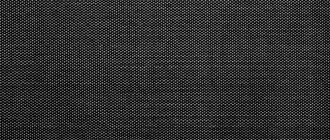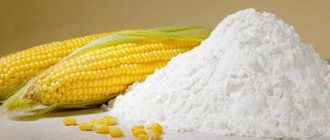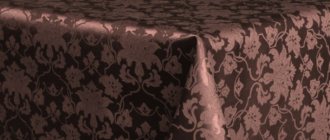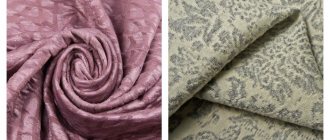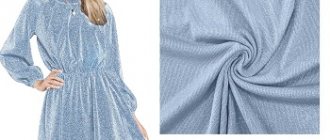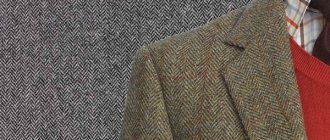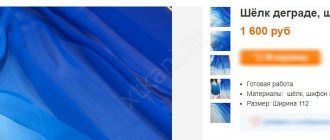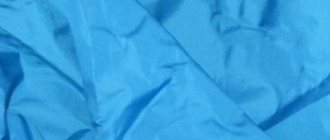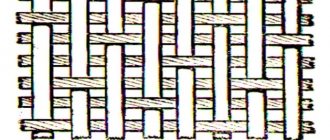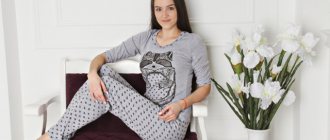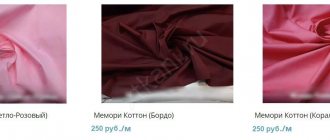Suit fabric: description with photos, composition, properties, types, characteristics. Further in the article we will provide the names of the fabrics for the suit and suggest which suit fabric is best to choose. Suit fabric is the fabric from which women's and men's suits are made. Almost any fabric can be used to make a suit, which is also influenced by fashion trends of the time. The most popular were and remain woolen and wool-blend materials, linen, cotton, viscose, etc.
What should the material for the suit be?
You can't skimp on things like this. A professional will immediately notice a cheap outfit, and the wearer will not be taken seriously. It’s better to pay a tidy sum for a suit and feel confident in any situation. The main thing is to choose a quality product that is made from a material that meets the requirements for it.
Suit fabrics must be:
- shape-resistant: sagging knees on trousers or prominent elbows on a jacket make the look sloppy and cheap. Maintaining shape is the main requirement. This is achieved through special styles, the use of additional elements - shoulder pads, lining (in the area of sleeves, shelves or solid);
- durable: such costume fabric cannot be torn without additional physical effort. Even on textured canvases with a convex relief, tightening is an extremely rare occurrence. The surface must also be abrasion resistant. The appearance of shiny areas is unacceptable even after 2-3 years of intensive use;
- breathable: an important parameter, since a person wears clothes most of the day. Good ventilation will provide an optimal microclimate and protect against hypothermia and overheating;
- hygroscopic: moisture should be quickly absorbed and not remain on the surface. Otherwise, a greenhouse effect is possible. And wet armpits will negatively affect your business reputation;
- aesthetic: we are not talking about flashy decor, but about the appearance of textiles. Be sure to avoid pilling: cuffs, areas around pockets and buttons should remain smooth. High-quality coloring is also important. Even after several dry cleanings, the outfit should retain its rich color.
Good material does not create difficulties during work. This means that the threads can be easily moved apart and cut through, and the edges do not fray. Canvases with such characteristics help to minimize the percentage of defects.
The service life of suits made from quality materials is 3 years. But with proper care they will last longer.
Barbie
So what kind of fabric is Barbie? Excellent draping fabric with a rough surface and crepe weave threads. Elastic, polyester or viscose is also added to the composition. The material is dense and does not crumble. Shimmers slightly when moving.
Due to its dense double-sided surface, Barbie material is often used in tailoring costumes.
Advantages
- Things are neat and look expensive.
- The fabric is dense and strong.
- Doesn't break, doesn't wrinkle.
- Fits beautifully to the figure. Barbie fabric stretches very well.
- Resistant to snags.
- Does not allow moisture to pass from outside.
Minuses
- Low air infiltration.
- Does not withstand prolonged exposure to sunlight.
- The item may become deformed if washing instructions are not followed.
Classification of suit fabrics
“Suit,” as textile workers affectionately call the fabric, is heterogeneous and includes many types of fabrics. There are several classifications based on different criteria.
By composition
On this basis the following are distinguished:
- natural fabrics: cotton, linen, wool. Can be combined: cotton and silk are often added to wool. The percentage of products made from natural fibers is insignificant. Despite their high hygienic properties, they cannot boast of durability;
- synthetic suiting fabrics: modern synthetics are not only wear-resistant, but also comfortable to wear. The textile industry offers samples that are not inferior in ventilation and moisture absorption to natural varieties. At the same time, they are easier to care for, do not wrinkle, and have a longer service life:
- mixed suiting fabrics: a combination of natural and artificial fibers allows you to obtain options with good basic characteristics - stretchability, resistance to deformation. Most often polyester, elastane, viscose, lurex, and polyamide are added to natural threads.
The elastane content in the composition rarely exceeds 5-7%. This amount is quite enough so that the product does not lose its shape and does not hinder movements. In addition, the additive is expensive, so manufacturers use it sparingly.
Suit fabric structure of yarn and threads
This parameter has a greater impact on aesthetics. For the manufacture of the material the following are used:
- twisted yarn: obtained by twisting 2 or more threads. Characterized by durability. High-quality twisting does not fall apart, so elongated loops and puffs rarely appear on the canvas;
- melange: represents mixed threads that differ in composition, texture, and color. This yarn can combine cotton and mohair, wool and acrylic. There are a lot of varieties. In addition, fibers are taken that are dyed in different shades, which allows you to obtain interesting color solutions;
- textured: made from polymers. It has porosity and friability. As a result, the fabric is soft and tactilely pleasant. Monofilament is characterized by strong crimp, which provides good elongation;
- shaped suiting fabric: another name is fancy. Indeed, it allows you to embody the creative ideas of designers. The main feature is the presence of color, geometric, and volumetric effects. It is practically not created from natural threads, since achieving the effect from linen, silk, and cotton is quite problematic. Synthetics are responsible for the fantasy: microfiber, nylon, acrylic, lurex.
Do not confuse sectional and melange yarns. Melange is a combination of dyed threads. Sectioning is a combination of colorless fibers, which are then dyed using a special technology: dyes of different colors are applied to certain areas.
By color
Modern costumes are not similar to the outfits of past centuries, when preference was given to plain fabrics. Such varieties remain in demand in the textile market. But fashion has become much more democratic, and color schemes have become more diverse. All fabrics for tailoring suits are divided into several types according to the color scheme:
- bleached fabrics: are treated with special compounds. The degree of whiteness for costume varieties is 70%. A light cream shade is allowed. Usually used for sewing summer clothes;
- plain-dyed suiting fabrics: fabrics with a uniform, uniform shade. One of the most common varieties for sewing business clothes;
- variegated: the pattern is determined at the weaving stage. Different threads are used in the warp and weft, resulting in stripes, raised jacquard patterns, checks, or diagonals. On smooth satin you can get shanzhan - a surface with iridescence;
- printed: the design is applied to the finished canvas. For this, special templates and printing machines are used.
Materials with patterns and prints are usually used for casual clothing. It is not customary to go to serious official events (negotiations, symposiums).
Texture separation
Relevant for wool and wool mixtures. The structure of these paintings is heterogeneous. In the textile world there are 2 groups:
- worsted suiting fabrics: there are almost 400 options. A distinctive feature is the rib. It can be small, large, straight or diagonal. It all depends on the weave used;
- fine-woven suiting fabrics: the main feature is the presence of pile. This leads to quality characteristics - high heat-protective properties and pleasant tactility and softness.
Working with fine cloth is easy: the pile hides minor defects. Sewing from worsted counterparts is best left to a professional. The clear texture does not forgive mistakes.
Other criteria for dividing into groups
There are other parameters for classification.
| Criteria | Groups |
| Weave | Twill or finely patterned is often used. Sometimes different types are combined, thereby achieving additional effects. Corduroy cord is made using pile weaving. |
| Special purpose | The appearance of materials and the requirements for them depend on this indicator. Holidays do not allow the use of low quality raw materials. Casual suits are more democratic. You can wear them to work every day. Uniforms are sewn specifically for representatives of certain professions. |
| Seasonality | A parameter that affects the main characteristics. Fabric for summer clothes should be light, hygroscopic and breathable. In winter options, these indicators are also supplemented by high heat-saving properties. |
The weight of the first suits could reach 3 kg. Due to the improvement of fabrics and the emergence of new types of textiles, this figure was reduced by 2 times.
Cashmere
Very thin material, twill weave. The finest premium quality mountain goat yarn. Cashmere items are never cheap. This material has many advantages.
- Things are almost weightless, thin. A cashmere sweater can easily be threaded through a small ring.
- Environmental friendliness of the material. Unlike synthetic analogues, dust mites will not appear in the structure and clothing will not cause allergic reactions on the skin.
- Cashmere, despite its thinness, is very dense and resistant to deformation.
- Suit wool has a low level of thermal conductivity, which means that the body will not freeze and the skin will breathe.
- Since the material is very thin and soft, things do not pinch or cause discomfort when worn.
Flaws
- After prolonged wear, pellets appear in places where surfaces touch. Therefore, it will be necessary to periodically clean the areas under the arms and on the belt.
Why do you need lining in suits?
Lining is an essential element of jackets. It has important functions:
- maintain the shape of the product and prevent it from stretching;
- protect the main fabric from wear;
- absorb excess moisture;
- provide comfort: smooth fabric glides well and does not stick to the shirt. This jacket is easier to put on.
The price of the suit is also affected by the quality of the lining material. Trying to save money, you can choose something with a lining made of cheap fabric. Budget options include polyester, polyester, and acetate. But this applies to products in which the lining only protects the back, and the shelves remain single-layer.
In everyday sets, viscose is often used, which has good thermal insulation properties. Thanks to maintaining an optimal climate, such clothes are not cold in winter and not hot in summer.
Suits for formal events, the so-called going out outfits, involve the use of only expensive fabrics. Silk is often chosen for this purpose. The material looks expensive and rich, but sweat stains remain visible on it. For lovers of creativity, the textile industry offers a mixed version (made of viscose and acetate) - shanzhan. On the contrary, you want to show off such a lining to others, because the graceful tints and muted shine look very impressive.
Spesori will tell you about the quality of the suit material. The product label contains numbers and letters. For example, 120S. The higher the number, the higher the quality.
Production
Coat and suit fabrics have been valued for their properties for centuries. Production technology is constantly being improved. If previously a suit for men or a boy was heavy, now wearing it is very comfortable. Now even coat material has very little weight.
Special materials are used as lining for suits to help the product maintain its shape. The properties of the shoulder pads have also changed - they have become softer, their size has been reduced.
In the production of all woven fabrics, suit and coat fabrics make up the largest group. This is due to the fact that a jacket, jacket, trousers or skirts made from these types of fabrics have a very different composition: they can be made from natural or artificial fibers. The ideal suit material for men or boys would be pure wool fiber. The technology for processing such materials is constantly improving.
Types of suit fabrics
The group with the collective name includes a variety of materials: both in composition and properties.
| Group | Name | Description | Advantages | Flaws |
| Wool fabrics | Cashmere | Made from wool and down from Indian and Nepalese goats | High heat-saving properties. Softness, tenderness, and hypoallergenicity make cashmere pleasant to the skin. The canvas usually undergoes anti-pilling treatment, so there is no risk of pellets. | There may be a problem with cleaning. In most cases, even dry cleaning cannot remove old stains. Therefore, dirt must be removed while it is fresh. |
| Gabardine | They are made either only from merino wool, or with the addition of viscose and cotton. A distinctive feature is a thin scar. | Warm, therefore suitable for the off-season and winter. Dense, but does not feel heavy. Keeps its shape perfectly. | Inconvenient to work with: the edges are very frayed. It is capricious when ironing and requires the mandatory use of gauze. Otherwise, you can damage the fabric irrevocably. | |
| Tweed | It is slightly hairy and has a characteristic herringbone pattern. Classic suits and Oxford-style models with leather inserts are made from tweed. | Durable, difficult to tear material. It rarely shows puffs. Has a pleasant tactility. | Since tweed is made from pure wool yarn, moths love it. High-quality fabric is also blamed for its high cost. | |
| Suit crepe | In addition to the wool base, the composition may contain acrylic, viscose, and sometimes cotton is added. It has an interesting grainy texture. | The crepe suit drapes easily and fits perfectly. Does not wrinkle or stretch. | It may lose color saturation over time, as it is sensitive to sunlight. In addition, some varieties shrink after the first wash. | |
| Diagonal | The name indicates a feature of the texture - a small diagonal rib. | Twill weave provides the fabric with strength and elasticity - it does not tear, but stretches well. Retains its shape during wear and does not fade in the sun. | The diagonal is almost flawless. There is only one nuance that causes dissatisfaction - the meager color palette. But for costumes you don’t need a multi-colored range of colors. | |
| Tights | It is characterized by a heterogeneous texture: a thin strip is noticeable on the surface. | Does not constrain movements, guaranteeing freedom of action. The fabric is available in several types of colors: melange, variegated, plain-dyed. | Slight shrinkage when washed. | |
| Covercott | Natural colors range from muted cream to dark brown shades. But there are also options painted in other colors. | High water-repellent properties with good breathability. Such outfits are not afraid of light rain. Does not wrinkle, which makes the fabric easier to care for. | Characterized by heavy weight. The material is too heavy. | |
| Cotton fabrics | Velvet | There is a thick pile on the surface. It is small, but gives the canvas aristocracy and elegance. Panvelvet is considered elite. Chameleon varieties change shades depending on the lighting. | Wear-resistant and does not deform after washing. The velvet is dense, but does not feel heavy. | Gets dirty quickly. Literally attracts dust, small debris - threads, animal hair. Therefore it needs frequent cleaning. |
| Velveteen | Available in 2 varieties: cord and ribbed. The first one has thick stripes and is used for sewing winter clothes. The second is less dense, suitable for demi-season suits. | Good stretchability, resistance to stains, retains heat: you will never freeze in it. | Electrostatic, but can be eliminated using antistatic sprays and conditioners. Does not like strong spinning, which can damage the structure of the fabric. | |
| Denim fabrics | Denim attracts with a variety of options. Jeans-linen is valued for its high hygienic properties. Young people often choose stretch, which stretches well and emphasizes all the curves of the figure. Silk denim attracts the eye with its glossy surface and lightness, although it is quite dense. Elite option - luxury jeans. | Jeans are always in trend, so high-quality material is appropriate in any situation. | The main advantages are strength and durability: products can last up to 5 years without losing their original characteristics. Moreover, the slight abrasion that occurs during wear adds charm. | The texture is somewhat rough, especially when the fabric is made from linen and cotton in equal proportions. After the first wash, denim may shrink. |
| Linen fabrics | Gozhka | In appearance it resembles a rough burlap due to the checkerboard weave. But it was precisely this nuance, with the light hand of Coco Chanel, that became the highlight of the fabric. | Does not deform, does not absorb odors. The fabric is difficult to tear. | Due to the loose structure, puffs may appear on the surface, so you need to be careful. Working with matting requires professionalism. Its ends are fraying a lot, you will have to take care of the strength and reliability of the seams. |
| Synthetic fabrics | Barbie | Made from polyester and spandex. In rare cases, the composition contains viscose or cotton. | The perfectly smooth texture ensures elegance. Barbies are used to make figure-flattering outfits. Suitable for sewing double-sided models. | Temperature changes affect the quality characteristics of the fabric: in extreme heat or cold, strength decreases. It is difficult to remove greasy stains from the surface, this is explained by the special structure of the fabric. |
| Nicole | Polyester predominates (up to 70%), but there is also a large percentage of viscose (up to 30%). Elastane is often added. | It lends itself well to coloring and does not fade. Does not wrinkle, so does not need ironing. | Breathability cannot be called ideal. In hot weather, such clothes may be uncomfortable. | |
| tiar | The composition may contain wool, but more often it is replaced with viscose. The main percentage is polyester, including elastane additives. | Dense (indicators vary in the range of 360-530 g/sq. meter), but lightweight material. It drapes easily, so it is used to create things with pleating. | Requires special care, otherwise it quickly loses its presentable appearance. | |
| Angelica | It is a mixture of polyester and elastane. | Resistant to wear and abrasion. The velvety front surface enhances aesthetics. Matte shine gives nobility. Does not accumulate static electricity. | If the fabric has not been pre-decated, it will certainly shrink during the first wash. | |
| Memory | The polyester base can be supplemented with cotton fibers. But their content should not exceed 30%. | Memory effect material. Due to this, it does not deform, does not stretch, and always returns to its original state. | Memory cannot be called elastic, but suits made from this material still fit well, emphasizing its curves. | |
| Pikachu | Polyester is used as a basis. The composition may contain viscose, spandex, elastane. | For winter clothes, dense varieties are chosen. For summer ones - light, almost weightless. Soft, stretches well over the warp and weft, making it suitable for sewing tight-fitting items. | Thin clothing cannot boast good ventilation. The rayon varieties are less durable than other Pikachu options. |
For formal men's suits, only pure wool is used. Women have a wider choice: velvet, linen, corduroy, and silk are added to wool.
Viscose
This suiting fabric is obtained by combining viscose with polyester fibers to give the fabric greater strength, elasticity and hygroscopicity.
Suits made from viscose are also easy to care for.
This fabric also has advantages:
- Light weight of the finished suit.
- There is no accumulation of static electricity.
- For clothes made from this fabric, a big plus is that pills do not appear on it after prolonged wear.
- The original brightness of the color is maintained after many washes.
Minuses
- This fabric is very demanding to care for and if the recommendations are not followed, it quickly becomes unusable.
- It wrinkles a lot.
- When stretched while wet, it quickly loses its shape.
- The color loses its brightness with prolonged exposure to sunlight.
- Shrinkage in size is allowed.
- In order to eliminate these disadvantages, impregnation of the fabric with special compounds is required.
Learning to choose the right suit and not make mistakes with colors
Classic colors for men's and women's suits are:
- Black: strict and solemn. Recommended for formal events only. Not suitable for everyday wear.
- Dark grey: a versatile option that goes well with any shade. Can be worn every day. Women can experiment with colors: pearl, wet asphalt, marengo, metallic. The perfect color for summer.
- Dark blue: classic – quite strict, but at the same time democratic. Such suits are appropriate both at a celebration and in a daily business setting.
It is better not to wear a brown suit if you are planning a formal reception or a job interview. This color is not yet included in the classic group, although there are no strict prohibitions on its use. It is better to replace it with beige (relevant for summer), shades of deep chocolate - recommended for brunettes.
You cannot choose red business attire. Men can replace this color with wine. Women – smoky pink. White is used in doses. It is not suitable for every day, as it will quickly lose its attractiveness.
Light shades make a person look younger. Deep tones give the image authority.
A little history
The classic men's suit first appeared in England at the beginning of the 19th century. In addition to the usual trousers, jacket, shirt and vest, his main attributes were considered to be a headdress and gloves.
Fashion changed, the need for gloves gradually disappeared, and instead of prim top hats, felt hats, bowlers and straw boaters appeared. But the basis of a business suit - trousers, jacket and vest - has remained unchanged to this day. Interpretations of a men's suit can be called a tailcoat, tuxedo or models in an informal casual style.
The turn of the 19th and 20th centuries is considered the era of women's emancipation. In 1870, Russian Tsar Alexander II even issued a decree in which he allowed ladies to serve in various state and public organizations.
By the beginning of the new century, women's employment had become widespread, and a need arose for business clothes for ladies. English tailor John Redfern made the first suit for emancipated women. It consisted of a long skirt of a comfortable cut and a frock coat, which was a bit like a man's jacket.
Trousers as a component of a women's business suit appeared only in the early 60s of the last century . Yves Saint Laurent and Cristobal Balenciaga were the first to introduce them into their collections.
Modern corporate culture allows female office workers to be creative when choosing clothes. These can be strict trouser suits with men's style jackets or romantic fitted jackets a la the 50s of the last century. There are both classic pencil skirts and flared styles made from light, flowing fabrics.
The approach to choosing materials for costumes has also changed. If 100–150 years ago woolen fabric was mainly used, then with the advent of synthetics, business clothes are sewn from mixed fabrics. This also affected its weight: a modern men's suit weighs about 1.5 kg, which is half that of its pure-wool “ancestors.”
Features of care
The composition is of great importance:
- It is advisable to dry-clean woolen and wool-blend suits. They cannot be washed. It is allowed to remove stuck debris with a soft brush. Treatment with anti-moth products is required.
- Linen ones can be washed by yourself. For colored suit fabrics, the temperature should not exceed +40 degrees. For unpainted ones, +90 degrees is allowed. Use a gentle machine spin. You can steam it. Ironing is only allowed from the inside out.
- Denim varieties are easy to care for. Machine washable. Dry flat. Otherwise, creases will appear that are difficult to get rid of.
- Synthetics are easy to care for. Wash at temperature + 30-40 degrees. The soleplate of the iron should not be hot - the fibers may melt. Although many of the synthetic types do not require ironing.
A huge variety of suit fabrics allows you to find an option suitable for any time of year and different settings. Each buyer can choose a material depending on the intended purpose, appearance, and fashion preferences.
Interesting
A modern suit is a set of clothes consisting of a jacket and a skirt or trousers. The suit was brought into fashion by the Europeans, for whom this item of clothing weighed at least three kilograms. The prototype of the jacket was the frock coat and tailcoat. Initially, this type of clothing was sewn only for men, and only relatively recently a women’s jacket, and later a children’s one, appeared.
Other types of textiles
Many types of clothing fabrics are suitable for business or casual suits, skirts, shirts and dresses. But there is a material that, according to its characteristics, is a suit, but it is not worth sewing clothes from it. But it has applications in other areas of life.
Laguna is a furniture fabric with a pleasant patterned texture, a wide range of colors and an affordable price. It is suitable for sofas and armchairs of any shape. The lagoon can be easily cleaned with a dry vacuum cleaner.
Carpet fabric stretches easily, but does not tear. It is used for upholstery of car interiors. Since it is synthetic, it does not fade, absorbs noise well and is not afraid of moisture.
Kiwi is an interior material for upholstering upholstered furniture or sewing curtains. It shimmers and shines, and looks like satin.
You can try to sew a product from these fabrics if you are a beginner seamstress. They are budget-friendly and unpretentious in operation.
